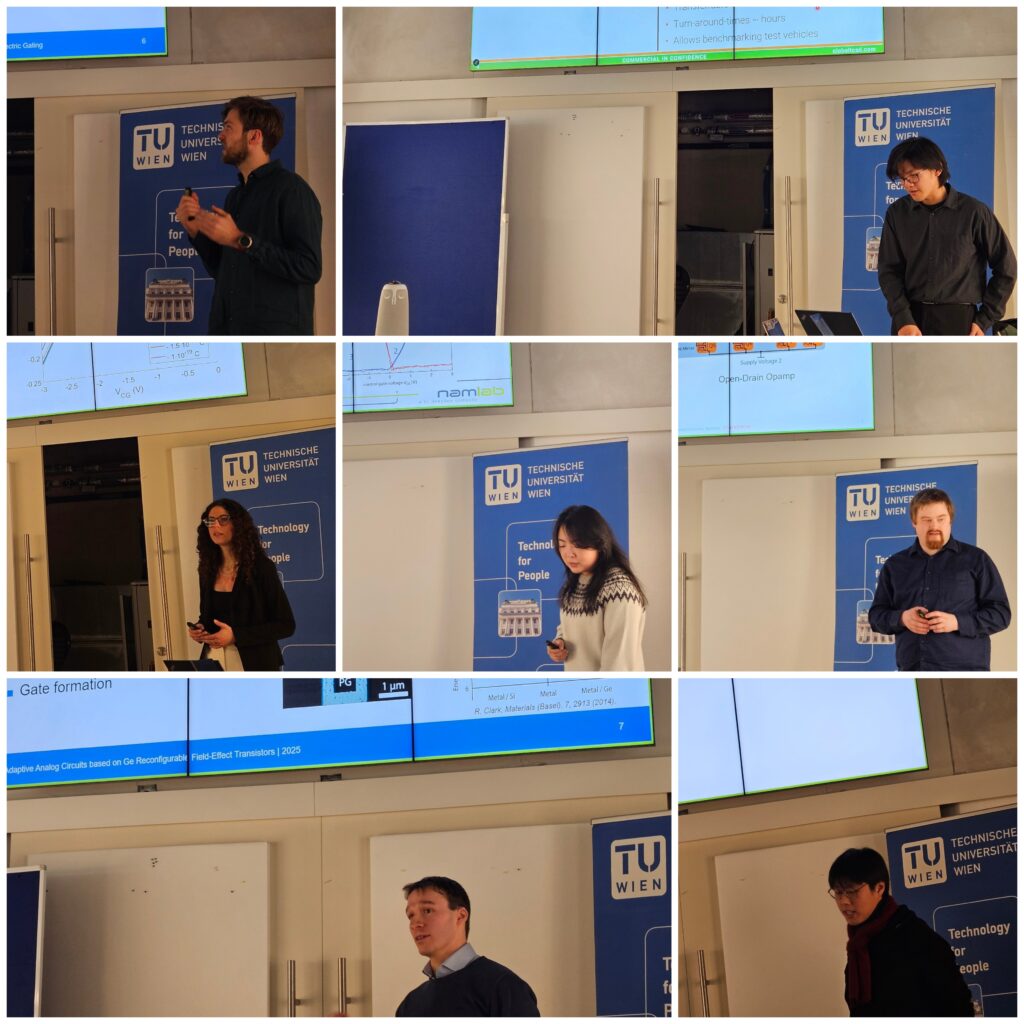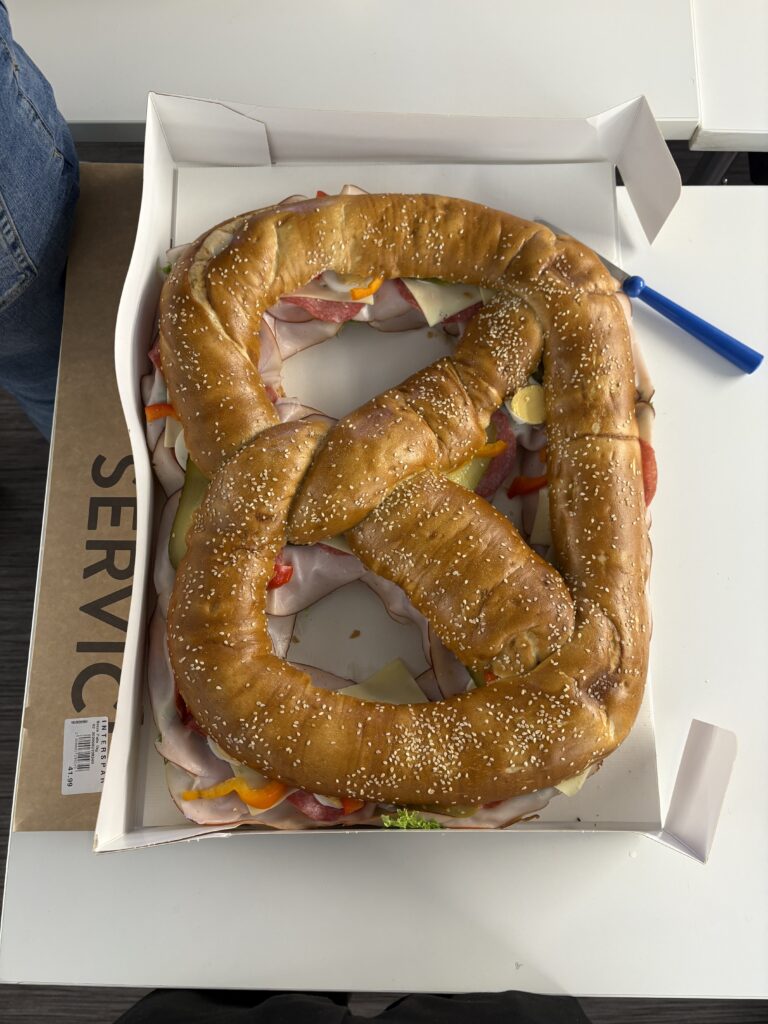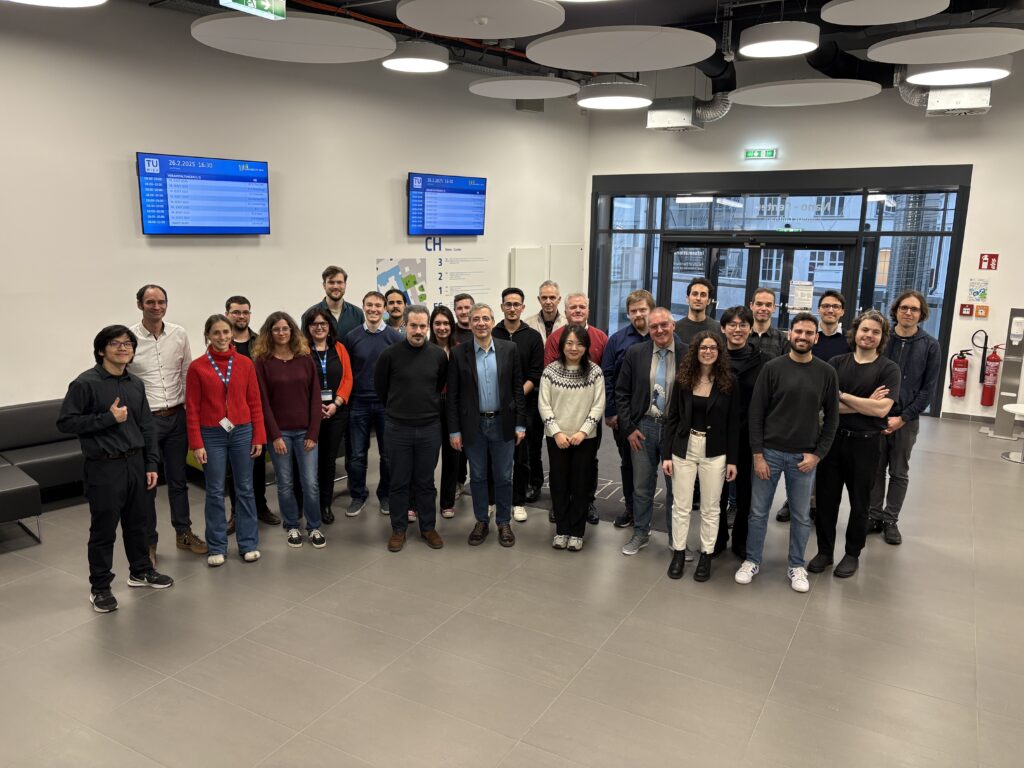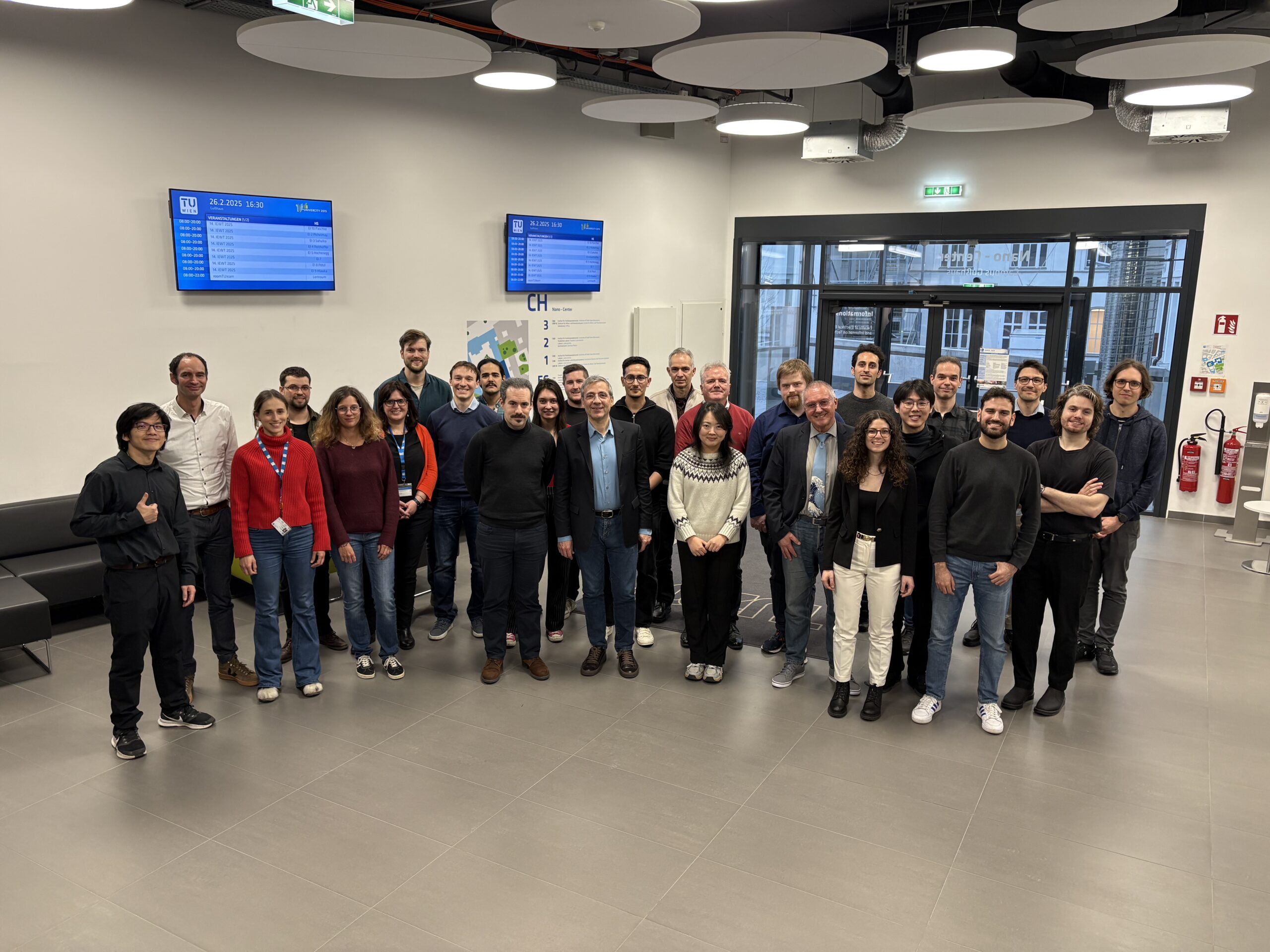On February 26th and 27th 2025, all the project partners (NaMLab, TU Vienna, Global TCAD Solutions GmbH, TU Darmstadt, TU Eindhoven and EPFL) met up in Vienna for the yearly project meeting of SENSOTERIC.
The two-day, event-packed meeting was hosted by the partners at TU Vienna in the brand-new Institute of Solid State Electronics led by Prof. Walter Weber, one of our PIs.
Many of our colleagues travelled to the beautiful city of Vienna by train, arriving either the day before the meeting (and having so the change to delight their palates with a slice of the original Sacher Torte or a portion of delicious Kaiserschmarrn) or on the same day, thanks to the nightly connections within Europe.
The meeting started on the morning of the 26th of February: the early birds met informally outside the conference room before 9 AM. This way old friends got the chance to say hi, and new additions to the team could introduce themselves to the veterans. Right after, the formal meeting started: we wanted to give the chance to all the Ph. D. students involved in the project to showcase their work and ideas for the project, and for this reason we started up with a very interesting Ph. D. forum.

After having satisfied our hunger for scientific knowledge, it was time for our stomachs to get some relief. The host surprised everybody with HUGE brezel sandwiches with different fillings.

After one (maybe three…) sandwich pieces and a coffee, the group was ready to start again with the technical program. We dived deep into the individual work packages, where the WP leaders reported the progress of their tasks in the first year of work:
- NaMLab reported the status of the integration of RFETs on 22 nm FDSOI industrial technology platforms for WP1.
- TU Vienna showed the advancements in NDR-transistors on Ge channels for WP2.
- GTS GmbH took the lead in illustrating how WP3 is progressing in modelling topics.
- TU Darmstadt reported, for WP4, the on-going investigation on fundamental circuit blocks designed with RFETs.
- TU Eindhoven showed how the 22 nm FDSOI baseline technology platform can offer interesting solutions for the realization of analog front-ends, aim of WP5.
- EPFL reported their progress in the employment of RFETs as biosensing elements for WP6.
After such a tight-schedule meeting, the group still wanted to take the time for a picture all together! The day was long but the morale as high as ever, after having realized how much the project progressed in just one year.

After an informal dinner where all the participants had the change to taste some great local cuisine and a good night of sleep, the second meeting day started again early in the morning.
On day two, we split up in discussion groups focusing on brainstorming the main challenges and goals of SENSOTERIC. Incredibly fruitful results arose from this discussions, that set the way for the next year of work! After another brezel-based lunch, NaMLab reported on the achievements of WP7, about dissemination and exploitation of the project results. A final discussion and a wrap-up concluded this great two-day meeting.
It was a great opportunity for the SENSOTERIC consortium to interact, and not only report on the individual work packages results but also to foster new collaborations, exchanges and ideas. It has been only a month, but we all are looking forward to the next yearly meeting.

Leave a Reply